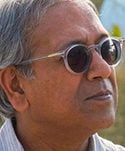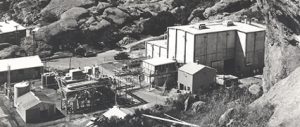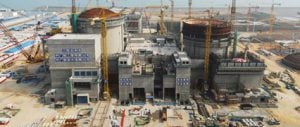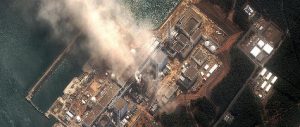The radiation leak from Japan’s Fukushima nuclear-power plant, triggered by the powerful earthquake and tsunami on March 11, has raised fresh questions about plans for the world’s largest nuclear-power station on the west coast of India. After months spent riding roughshod over protesters fighting the project in the state of Maharashtra, the Indian government has adopted a slightly different tune. The authorities say they will review and enhance safety features at the proposed plant, though they still insist “there is no alternative to nuclear power”.
Residents of Jaitapur – the mega-plant’s proposed home, south of Mumbai – are unimpressed by the government’s arguments. “Do they take us to be fools?” asks Milind Desai, a doctor who practises in the nearby town of Mithgavane. “NPCIL [Nuclear Power Corporation of India Limited] officials earlier tried to tell us that radiation is harmless because there is background radiation in nature. Now after the disaster in Japan, they suddenly tell us they’ll put in extra safety precautions. Why should we trust them?”
The mistrust is increased by the opacity of India’s nuclear establishment. The government’s Department of Atomic Energy (DAE) owns NPCIL and also runs the Atomic Energy Regulatory Board (AERB), where any citizen wishing to make a complaint about the nuclear industry must go. People cannot even use the Right to Information law to find out what is going on, as anything nuclear falls under the Official Secrets Act, making it exempt from transparency regulations.
Jaitapur’s residents have protested for five years against the proposed complex of six reactors, each capable of generating 1,650 megawatts of power. The government has responded by jailing protestors and banning civil-society activists from entering the area – that was until the Fukushima incident showed the world that even safety-conscious Japan can fail to avert a serious nuclear accident.
NPCIL chief SK Jain has said that the reactors being designed for Jaitapur by French firm Areva are different from those at Fukushima – and therefore safer. But now even the AERB’s former head A Gopalakrishnan is asking why the residents of Jaitapur should be made guinea pigs for a new design. The model in question – the Evolutionary Power Reactor (also known as the European Pressurised Water Reactor) – is not yet up and running anywhere in the world. The first one is being built in Finland, where it has run into many problems (construction is running at least four years behind schedule and 2.75 billion euros over budget).
A long-time critic of India’s nuclear policy, journalist and activist Praful Bidwai, said: “The EPR is the largest-ever nuclear reactor designed in the world and has a much higher density of fission-causing neutrons and fuel burn-up than do normal reactors [of 500 megawatt to 1,000 megawatt capacity]. The EPR’s high fuel-combustion rate will lead to greater production of harmful radionuclides, including seven times higher production than normal of iodine-129, with dangerous implications for radioactivity releases, damage to the fuel cladding and waste generation.”
In the wake of the Fukushima disaster, Indian prime minister Manmohan Singh announced in parliament that safety issues at all nuclear plants would be re-examined, while environment minister Jairam Ramesh has said his department is now likely to ask for additional safeguards before clearing the Jaitapur project. But Gopalakrishnan remains scathing about the way safety issues are tackled in India.
“In India, we are most disorganised and unprepared for the handling of emergencies of any kind of even much less severity [than the earthquake and tsunami in Japan],” Gopalakrishnan wrote in the Daily News and Analysis on March 18. “The AERB’s disaster-preparedness oversight is mostly on paper and the drills they once in a while conduct are half-hearted efforts which amount more to a sham.
“In case of earthquake engineering, the Nuclear Power Corporation strategy is to have their favourite consultants cook up the kind of seismic data which suits them, and there is practically no independent verification of their data or design methodologies. A captive AERB, which reports to the DAE, makes the overall nuclear safety management in India worthless.”
NPCIL officials have been quick to point out that Jaitapur is in seismic zone three – moderate risk – while Fukushima is in high-risk seismic zone five. But both are on the coast and face the same tsunami threat. Most nuclear power plants are located by the sea because they need huge amounts of water to cool the reactors. This is a strategy that may have to be reviewed in light of the two large tsunamis that have taken place within the last seven years. The last one, in 2004, dumped debris into underground tanks being built for nuclear-waste storage at the Kudankulam nuclear-power plant on India’s south-eastern coast. It took NPCIL two years to remove the debris. If the plant had been in operation, there would have been no place to store radioactive nuclear waste.
The Jaitapur project has raised a host of concerns, beyond the radioactive risk. One is that project developers have deliberately played down the value of the land in order to minimise the compensation they must pay. NPCIL stated in its project report that two-thirds of the area where it would set up the nuclear complex was “barren”. In fact, it is not only part of the lush-green coastal belt, but also home to the world’s costliest mango, the Alphonso. Each mango sells for around US$2.50, even in the domestic market and some of the orchard owners are very wealthy. Little wonder 95% of the people asked to vacate their lands to make way for the project have refused to do so.
The fishing beds in the Arabian Sea are also very rich, and much of the catch is exported to Japan and the European Union. But this industry is threatened by the nuclear scheme – the fish are not likely to stay near a spot where a plant discharges water into the sea five degrees hotter than the ambient temperature. Even if they do, EU rules demand that the temperature at which fish are caught is specified, and so the consignments will be rejected. Overall, as the respected Bombay Natural History Society pointed out in a recent report, without a comprehensive biodiversity assessment – which has not been done –“the true impact of a project of this scale will never be known”.
News that one of the project’s main funders, Germany’s second-largest bank Commerzbank, has pulled out (according to information obtained by the India office of the environmental NGO Greenpeace) comes as little surprise. Civil society activists say that, unless the government puts pressure on one of the insurance firms it owns, no one will be willing to insure the project either. Against a background of growing unease over nuclear development around the world, India’s ambitious programme may too be starting to unravel.
Joydeep Gupta is project director (south Asia) of chinadialogue’s third pole project.
Homepage image from Greenpeace shows a protest at Jaitapur.



